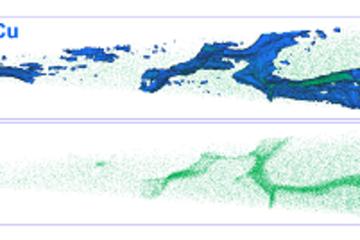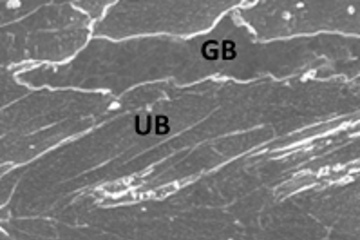All genres
301.
Talk
Coupled experimental-numerical Analysis of Microstructures. DGM Arbeitskreissitzung Mikrostrukturmechanik, Freiberg, Germany (2014)
302.
Talk
Integrated experimental-numerical methodology to investigate plasticity in bulk nanostructured alloys. DGM Arbeitskreis Sonde, Düsseldorf, Germany (2014)
303.
Talk
Strain and stress partitioning in ultrafine grained ferrite/martensite steel. TMS 2014, San Diego, TX, USA (2014)
304.
Talk
High-Resolution Crystal Plasticity Simulations of Artificial Microstructures. 13th GAMM Seminar on Microstructures, Bochum, Germany (2014)
305.
Talk
Using the DAMASK suite to study micromechanics and crystal plasticity of heterogeneous materials. TMS 2014, 143rd Annual Meeting & Exibition, San Diego, CA, USA (2014)
306.
Talk
Using the DAMASK suite to study micromechanics and crystal plasticity of heterogeneous materials. Plasticity ’14: The 20th International Symposium on Plasticity & Its Current Applications, Nassau, Bahamas, USA (2014)
307.
Talk
Spectral Methods for finite strain polycrystal plasticity. ELLE Workshop
, Tübingen, Germany (2014)
308.
Talk
On a proper account of plastic size effects in continuum models including the flux of dislocation density. TMS 2014, 143rd Annual Meeting & Exibition, San Diego, CA, USA (2014)
309.
Talk
Dislocation density distribution around an wedge indent in single- crystalline nickel: Comparing non-local crystal plasticity finite element predictions with experiments. 11th World Congress on Computational Mechanics (WCCM XI) and 5th European Conference on Computational Mechanics (ECCM V)
, Barcelona, Spain (2014)
310.
Talk
Dislocation density distribution around an wedge indent in singlecrystalline nickel: Comparing non-local crystal plasticity finite element predictions with experiments. EMMC-14, 14th European Mechanics of Materials Conference
, Gothenburg, Sweden (2014)
311.
Talk
Crystal Plasticity Implementation of an Advanced Constitutive Model Including Twinning for High Manganese Steels. 2nd International Conference High Manganese Steel, HMnS 2014
, Aachen, Germany (2014)
312.
Talk
Robust Spectral-Based Numerical Methods for Heterogeneous Microstructures. 13th GAMM Seminar on Microstructures, Bochum, Germany (2014)
313.
Talk
Integrated experimental-numerical methodology to investigate plasticity in bulk nanostructured alloys. CMCn2014, 4th International Symposium on Computational Mechanics of Polycrystals, Düsseldorf, Germany (2014)
314.
Talk
Integrated experimental and simulation analysis of stress and strain partitioning in dual phase steel. 17th U.S. National Congress on Theoretical and Applied Mechanics Michigan State University, East Lansing, MI, USA (2014)
315.
Talk
Integrated Experimental and Simulation Analysis of Dual Phase Steel Micromechanics. Optimising Performance Through Integrated Modelling of
Microstructure (OPTIMoM 2014)
, Oxford, UK (2014)
316.
Talk
Integrated experimental-numerical analysis of microstructural strain and stress evolution in bulk nanostructured alloys. Physics based materials models and experimental observations, Cesme, Turkey (2014)
317.
Talk
Integrated experimental-numerical methodology to map microstructural strain and stress evolution in bulk nanostructured alloys. MMM2014, San Francisco, CA, USA (2014)
318.
Talk
Integrated in-situ experiments – full field crystal plasticity simulations to analyze stress – strain partitioning in multi-phase alloys. Nanomechanical Testing in Materials Research and Development IV, Olhão, Algarve, Portugal (2013)
319.
Talk
Modellierung von Verformungsvorgängen auf Basis der Kristallplastizität. Herbstschule des SFB 799 TRIP-Matrix-Composite, Leipzig, Germany (2013)
320.
Talk
Stress-strain partitioning in martensitic-ferritic steels analyzed by integrated full-field crystal plasticity simulations and high resolution in situ experiments. GDRi CNRS MECANO General Meeting on the Mechanics of Nano-Objects, MPIE, Düsseldorf, Germany (2013)











